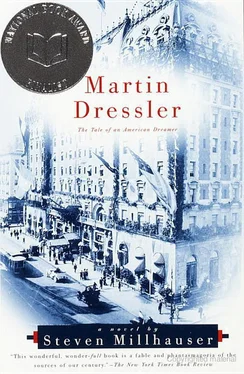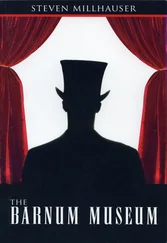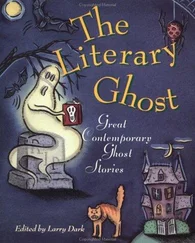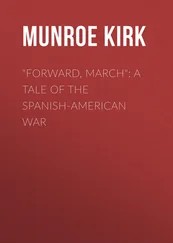THE WARM WEATHER TURNED COLD, A LIGHT snow fell, and when Martin stepped into the lobby of the Vanderlyn in the early mornings or the lobby of the Bellingham in the late evenings his cheeks tightened and tingled in the dry warmth. Mrs. Vernon said it would be the death of her, simply the death; and Martin agreed that it had been an unusually treacherous winter.
One cold evening when Martin entered the lobby of the Bellingham he was surprised to see Mrs. Vernon step from the parlor and hurry toward him. Her expression was anxious; she began with an apology. Martin, suddenly alarmed, glanced into the parlor and saw four empty armchairs about the little table. His alarm seemed to alarm Mrs. Vernon, who urged him not to worry. “But what is it?” he said. “What’s happened?” The story emerged slowly: Caroline’s radiator had banged away all night, Caroline hadn’t slept a wink and was on the verge of nervous prostration, the young man who had come to fix it in the morning hadn’t done a bit of good. They were at their wits’ end. “But it’s a simple matter,” Martin said. “There’s water in the radiator and it has to be let out. Did he check the valve?” She couldn’t remember whether the young man had checked the valve or not, and begged Martin to rescue them.
In the Vernons’ lamplit parlor on the fifth floor, Caroline lay back with half-closed eyes on a blue-green sofa, patterned with long, curving ivory leaves and twisting silver vines. Her face against the blue-green damask looked very pale, as if she were a little girl lost in a blue-green forest. Two little lines of strain showed between her dark eyebrows. Emmeline, tired and humorous, led Martin into Caroline’s room, where the offending radiator stood under a windowsill, between the mahogany bed and a mirrored wardrobe. Martin squatted beside the radiator and Emmeline bent over, hands on knees, to watch. He checked the valve, which was open.
“The banging comes from steam hitting water in here,” Martin said, tapping the radiator with a knuckle. “There shouldn’t be any water in the radiator. It’s supposed to flow out through this pipe down here.” He pointed to the pipe under the inlet valve. “All we have to do is tilt the radiator toward the inlet valve. You don’t happen to have a block of wood or a brick?”
“I might have one in my purse,” Emmeline said, and Martin looked at her with surprise before it struck him that she had said something amusing.
Five minutes later Martin returned to the Vernons’ apartment holding in his hand a dark book. In Caroline’s bedroom he knelt down, lifted the unattached end of the radiator, and slipped the book under. “That should do the trick,” he said, slapping dust from his hands. Still squatting, he looked up at Emmeline. “Does anyone ever fiddle with this valve?”
“Caroline turns the heat off when it gets too hot.”
“Well,” Martin said, “there you have it. You should never turn this knob unless the radiator is cool. If you turn it off when the radiator’s hot, the steam gets trapped in the pipes and can’t drain out when it condenses into water. Better just to leave it alone.” On a mahogany dresser with an oval bevel-edged mirror lay Caroline’s flowered hat.
“I think I see. And your book?”
Martin burst out laughing. “An Introduction to the Art of Typewriting . I taught myself last year. This is as good a place for it as any.”
“Well,” said Emmeline, leading him back into the parlor, “the mystery has been solved. You’re quite the hero, sir.”
“I should say so,” said Mrs. Vernon. “How can we ever thank you?”
“Please,” Martin said, holding up a hand and shaking his head. “It’s nothing at all.” He glanced at Caroline, who murmured “Thank you” and, turning her cheek toward the blue-green sofa-back, sank into the curving leaves and twisting vines.
NOW ON LATE SUNDAY MORNINGS IN THE warming air, Martin led the Vernons on excursions about the neighborhood, stopping with them for a late lunch in a shady beer garden or outdoor cafe and then pushing on into the lengthening afternoons. He took them up along the park by the river into a world of turreted granite mansions and ivy-covered red-brick villas rising among tall oaks and lush lawns. They walked in the winding park with its steep bluffs and sudden open riverviews, passed through an orchard of apple and peach trees, ate a picnic lunch while sun and shade moved on their hands. Through the trembling leaves Martin pointed to boys fishing on a sun-flooded wharf. Three-stacked steamers moved on the river. Suddenly a train came clattering past on the open tracks between the park and the river, a smell of animals was in the air; Mrs. Vernon wrinkled her nose. But Martin had come to like the harsh smell of cattle riding in cars toward the slaughterhouses down in the west thirties. Through the upper trees he pointed to a flash of yellow: the cab of a steam shovel sitting in a cleared side-street lot. The West End was growing, it was growing even as they sat like people in a picture eating their picnic lunch on a lazy Sunday afternoon — lots were being cleared, streets graded, rocks blasted, excavations dug. Row houses were springing up left and right, but the future, Martin told them, lay up in the sky — in apartment houses and family hotels, in grand multiple dwellings. And as he spoke, the park, the river, the trembling spots of sun and shade, the three women, all fell away; and he saw, rising up along the avenues between the Central Park and the river, into the blue air, high buildings, shining and many-windowed, serene and imperious.
He learned one evening that they had never ridden on an El train. The next Sunday Martin led them up a flight of roofed iron stairs toward the station high above the street. With its peaked gables and its gingerbread trim, the station looked like a country cottage raised on iron columns. Martin bought four tickets in the station agent’s office and led the three women through the two waiting rooms, one for men and one for women, each with its pine benches and black walnut paneling. Sunlight poured through the blue stained-glass windows and lay in long blue parallelograms on the floor. Outside on the roofed platform they looked down at rows of striped awnings over the shop windows of Columbus Avenue, each with its patch of shade, and watched the black roofs of passing hacks. Suddenly there was a throbbing in the platform, a growing roar — people stepped back. Mrs. Vernon gripped Martin’s arm, white smoke mixed with fiery ashes streamed backward as the engine neared, and with a hiss of steam and a grinding sound like the clashing of many pairs of scissors, the train halted at the platform. There was a sting of coalsmoke in the air. The cars were apple green. Martin looked at his three women defiantly, as if to say: Isn’t it a fine color! Isn’t it grand! Inside he gestured proudly toward the oak-paneled ceilings, as if he had designed them himself, pointed out the mahogany-trimmed walls painted with plants and flowers, the tapestry curtains over the wide, arched windows; and guiding the three women past the long seats that ran parallel to the walls, he led them to the center of the car, where a group of red leather seats were set at right angles to the wall and faced each other, and where Mrs. Vernon, holding onto her hat, insisted on having a seat by the window.
He tried to show them the city stretching away to the north and south, from the northernmost station with its shady beer garden to the South Ferry terminal with its view of the bay: the thicket of masts and yardarms tilted in every direction, the slow-moving tugs hauling barges, ferries crossing to the Jersey shore. From shaking clattering cars he made them look for signs painted on the sides of rushing-away buildings: New York Belting and Packing Company, Vulcanized Rubber, Knox the Hatter, Street Brass, Oyster House, Men’s Fine Clothes. From trains rushing north and south he pointed at the tops of horsecars and brewer’s wagons, at wharves and square-riggers and barrel-heaped barges, at awnings stained rust-red from showers of iron particles ground off by El train brake shoes. He pointed at open windows through which they could see women bent over sewing machines and coatless men in vests playing cards around a table, pointed at intersecting avenues and distant high hotels — and there in the sky, a miracle of steel-frame construction, the American Surety building, twenty stories high, dwarfing old Trinity’s brownstone tower.
Читать дальше












